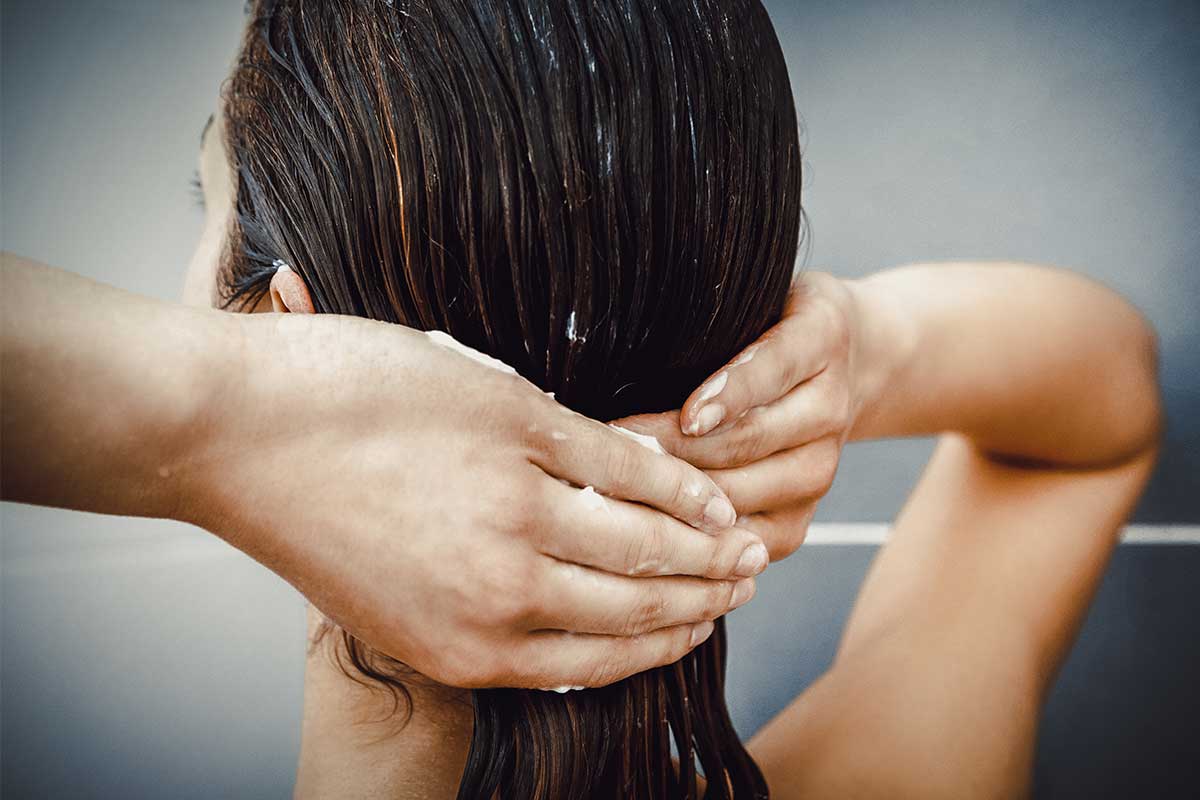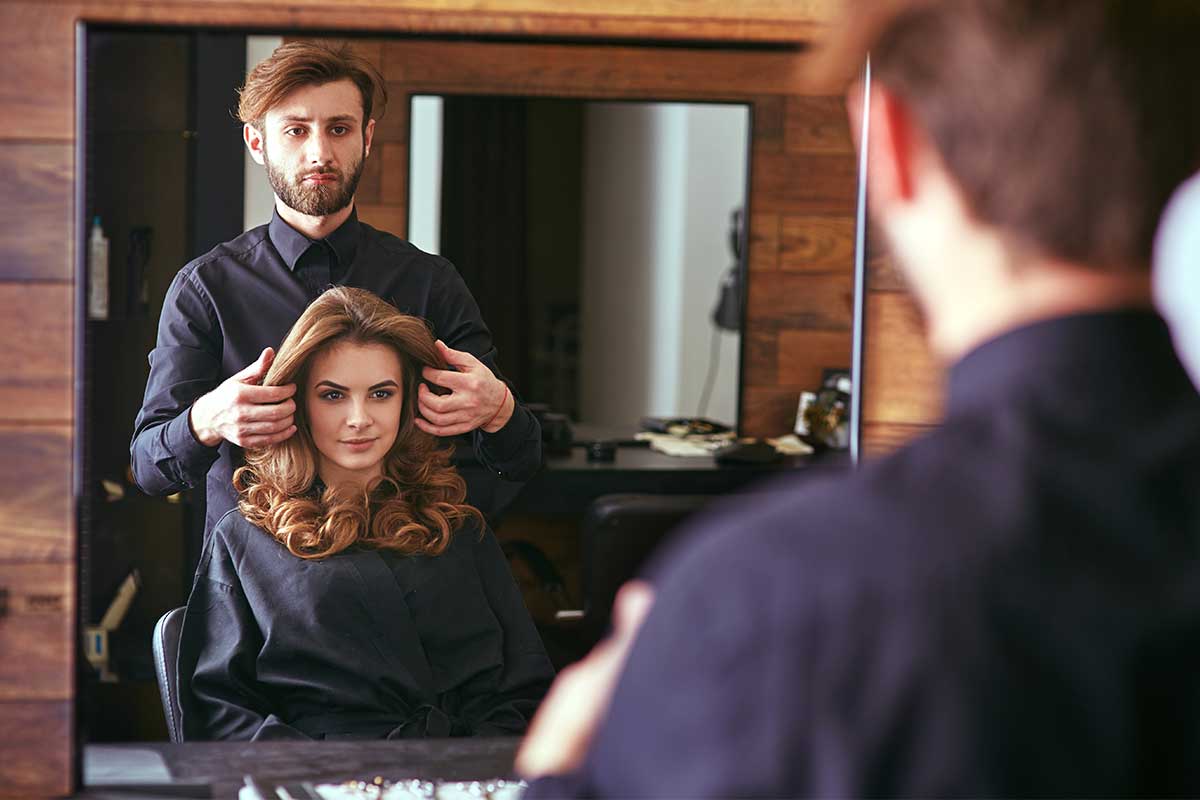
You may know which hair straightener you stand by or the cut that flatters you most—but what about the basics? How to shampoo, condition and trim your hair might seem like common sense, but there are a lot of misconceptions about these hair care fundamentals. Keep reading to see what you’re doing right and how you can take better care of your hair.
How to Shampoo
Some people prefer to shampoo their hair every third day, others prefer co-washing (conditioner-only, no shampoo), while still others love the perfectly clean feeling of shampooing their hair every day. You should decide what’s best for you based on your hair type and scalp (those with greasy hair or sensitive scalps might prefer to wash their hair every day), but Krista Depeyrot, of Salon Bisoux, has a few basic rules that anyone can adhere to. “People use too much shampoo, or sometimes they slap it all in the front,” she says. “You should put the shampoo in your hand first and rub them together to kind of excite the molecules, then put the shampoo in at the root, add water and start to lather.” While some advocate for fewer products, Ahmet Sim, of Salon Simis and Spa, notes that adding a detoxifying shampoo to your at-home routine can give your hair a much-needed reset if you use a lot of products or color your hair frequently. “It can really open up the hair follicles,” he says, “like opening up your pores,” making it an ideal pre-wash before deep conditioning.
How to Condition
You should always condition after you shampoo, and despite the popularity of co-washing, Depeyrot urges clients to only condition from the mid shafts to the ends of their hair. “A lot of people apply conditioner to their roots, and that can make your hair feel really oily,” she says. To lock moisture into your locks, Sim recommends using at-home deep conditioning masks at least once a week. These masks are tailor made for any hair type—adding volume to fine hair or nourishing hair after multiple chemical treatments. “Even people with virgin hair should do at-home deep conditioning masks,” he says. “Shampoo your hair, then towel dry it and put the right deep conditioner on, comb it through, and then either towel roll it or put a plastic cap on.” You can wear these masks for as few as 30 minutes or leave them on overnight. Leave-in conditioner is another essential product. “You always have to use some type of leave-in to protect your hair from the sun, the air, the heat, the cold. It’s the same as skincare,” Sim says.
When to Trim
Trimming your hair frequently can keep it from feeling dry and unkempt between major cuts. While Depeyrot encourages clients to get a trim at least every 11 weeks, Sim is a proponent of the “dusting trim,” a trim at the seven-week mark that takes about a quarter-inch off your ends. “Trimming is the main thing,” he says. “Every seven weeks, they should be in the salon to get a dusting trim so the ends are cleaned off and the hair knows, ‘Oh, I’m trimmed up, I’ll grow nicely now.’” Layers can also disappear without trims. “Hair on the right side and the left side of the head—it all kind of grows unevenly. So you might get nice layers, but in two months some of them are longer and shorter in appearance than they seemed before,” Sim says. So whether you go every seven or 11 weeks, the idea is the same: Trims are healthy for your hair and allow you to maintain a stylish look.

Talking Shop
You don’t want a communication breakdown between you and your stylist right before you change your hair. So how can you describe what you want when you don’t have the right words?
“I like when people bring photographs that explain what they’re looking for,” Depeyrot says. “Sometimes they tell you, ‘Oh, I don’t really like warm tones,’ but then they’re showing you a picture with warm tones, so then you can understand, OK, so what she doesn’t like is something that’s brassy, but she likes something that’s a soft gold.”
Before you get in the styling chair, assembling a mini lookbook of styles you love and hate can better inform your stylist and help them actualize your vision. Unlike words, which can be subjective, it’s much harder to misinterpret a photo. That’s why Depeyrot urges her clients to bring a few along.
“You could say ‘curtain bang,’ I could say ‘curtain bang,’ but what happens when we look at the same photograph together is we start to see the same thing, and when we look at multiple photographs together we start to see the trend of what the client really likes,” she says.
Bringing lots of photos is even more important when you’re changing stylists. Depeyrot says that multiple unsatisfying haircuts can motivate people to try a new stylist, and in those cases, clients should bring photos from the last time they were happy with their hair.
“Even if it’s from when they were 20,” she says. “Then I can see what’s really changed.”
For Sim, consulting with clients prior to the actual appointment makes the process smoother. Some salons, including Salon Simis, offer free 15-minute consultations for clients to ask questions about changing their hairstyle, maintaining their hair or trying new products. Sim also encourages clients to email the salon photos of their hair (shots of the back and roots, too) so he can decide what they need going forward and make them the right kind of appointment.
Such collaboration can even extend beyond the appointment. If you’re unhappy, Sim says you should always call your salon back.
“Within the first 10 days, we can change up the color or tone, add more layers or go shorter,” he says. “We never say no in the first 10 days. We can always help you out.”

